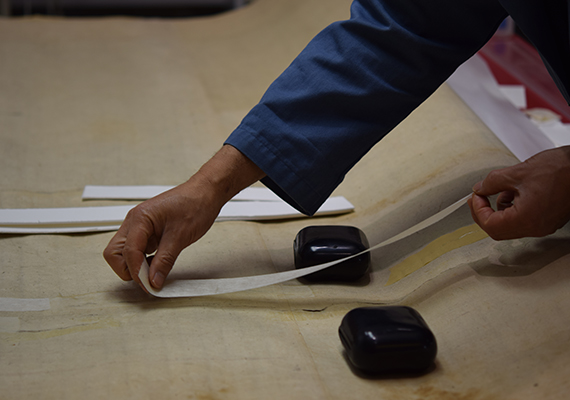Prior to its move into gallery 178, the painting is photographed to document the before treatment condition. Because the painting is so large, it is photographed in several sections.

Conservators apply bast paper strips to temporarily support tears in the painting. The strips are adhered to the back of the painting using wheat starch paste.

The scroll is also surface cleaned with triple-washed chamois cloth to remove dust, soil, and flyspecks. During all surface cleaning, care is taken not to disturb areas of thickly-applied pigments.
After cleaning, funori (Japanese seaweed paste) is applied with rayon paper strips to stabilize areas of loss and tears in the silk support.

Conservators next prepare the lining paper that will support the painting in its hanging scroll format. The lining papers are dyed to match the color of the lightest areas of the painting.

The dyed lining papers are joined to fit the width of painting. The painting is about 101 inches in width; the lining papers are made to be about 109 inches.

Some mold stains are seen in between the silk support and the lining paper around the painting’s water-stained areas. The mold is tested and determined to be inactive. To reduce the mold stains and the yellow/brownish discolorations, two stages of cleaning are undertaken.
First, the black mold stains are removed from the surface using filtered water and picked up with blotting paper squares. This method is used since the mold particles are under the painting and vacuuming would not be effective.

For further cleaning, a solution of 70% isopropyl alcohol is sprayed onto the surface.

Warm filtered water is then applied using a brush attached to a suction table to draw out the water-soluble discolorations.
